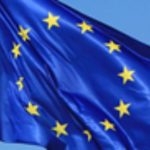The legal protection of computer software
- 29 June 2012
- Articles
In the last six months, two decisions of the European Court of Justice in Luxembourg involving legal protection to computer software have come to our attention.
Briefly, the first is a decision dated 2010 which ruled on questions referred by the Supreme Administrative Court of the Czech Republic in the case of the Security Software Association (Bezpecnostní softwarová asociace – Svaz softwarové ochrany; BSA). This association asked the Czech Ministry of Culture for authorisation to collect royalties for the collective administration of economic rights in respect of computer programs. The request was denied. The authorisation was also denied on appeal and annulment.
The Czech Court asked the Court of Justice if article 1.2 of Council Directive 91/250/EEC of 14 May 1991 on the legal protection of computer programmes, which reads that “Protection in accordance with this Directive shall apply to the expression in any form of a computer program. Ideas and principles which underlie any element of a computer program, including those which underlie its interfaces, are not protected by copyright under this Directive” does or DOES OR DOES NOT PROTECT the graphic user interface (GUI) of a computer software or part of this.
The Court concluded that the GUI merely constitutes an interactive interface, which allows communication between user and software, therefore it cannot benefit from copyright protection because it is not the expression of a computer programme under the aforementioned article.
However, the GUI can benefit from copyright protection if it is original and the authors own intellectual creation.
The originality criterion is not met if the components of the GUI are differentiated only by their technical function.
The second of these judgements is dated May 2012.
The High Court of Justice (England & Wales) asked the Court of Justice of the European Union not only for its interpretation of article 1.2 of the Council Directive 91/250/EEC of 14 May 1991 on the legal protection of computer programmes, but also its interpretation 5.3 of the same and article 2 of Directive 2001/29/EC of the European Parliament and of the Council of 22 May 2001 on the harmonisation of certain aspects of copyright and related rights in the information society.
It resolved a dispute between SAS Institute Inc. and World Programming Ltd (“WPL”) whereby the former is an analytical software developer that had written an integrated set of programs that enabled users to process and analyse data (the SAS system) and the latter was a company seeking to compete in the market with software capable of running programmes written with the SAS system.
There was no suggestion that WPL had access to SAS’s source code, that WPL had copied any of the text of that code, or that WPL had copied any of its structural design.
The High Court also pointed out that previous courts had held that it is not an infringement of the copyright in the source code of a computer program for a competitor of the copyright owner to study how the program functions and then to write its own program to emulate that functionality.
The Court concluded the following with regard to the questions submitted:
The functionality of a computer program and the programming language and the format of data files constitute a form of expression of that program and may, as such, be protected by copyright in computer programs for the purposes of that directive. None of the three comply with the requirements of article 1.2 and they are therefore not protected.
The question of whether a person who has obtained a copy of a computer program under a licence is entitled, without the authorisation of the owner of the copyright in that program, to observe, study or test the functioning of that program in order to determine the ideas and principles which underlie any element of the program, the Court concluded in this case that it is possible to create a similar program, but that it is NOT possible to create a similar programme by any decompilation or access and unauthorised copying of the source code or the code of a computer program.
Finally, and with regard to the question of whether Article 2(a) of Directive 2001/29/EC of the European Parliament and of the Council of 22 May 2001 on the harmonisation of certain aspects of copyright and related rights in the information society could be interpreted as meaning that the reproduction, in a computer program or a user manual for that program, of certain elements described in the user manual for another computer program protected by copyright constitutes an infringement of that right in the latter manual, it was decided that this was the case provided that the user manual for the computer program protected by copyright was ORIGINAL.








